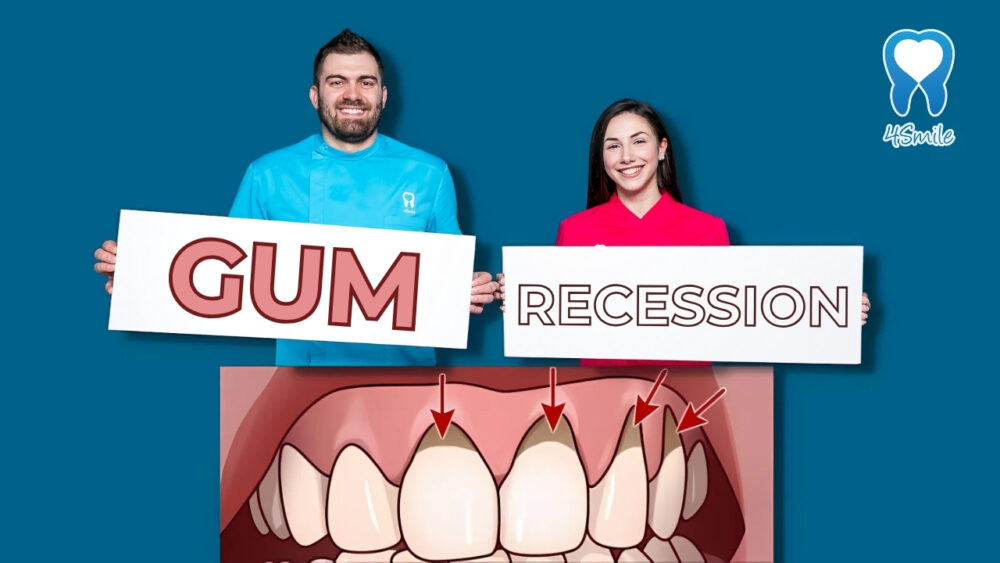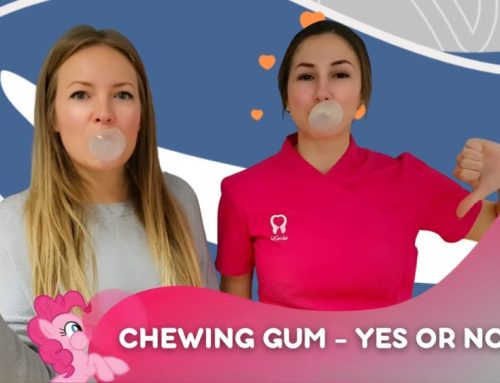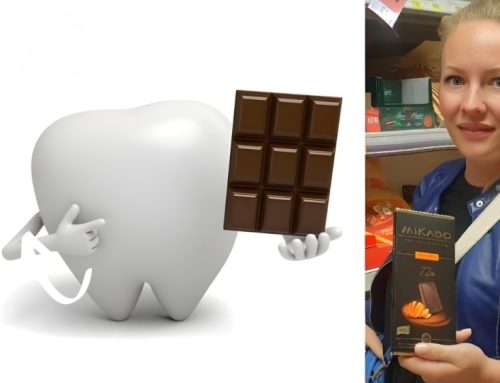Have you noticed that your teeth look longer than usual?
Or have you felt sensitivity or pain in your teeth?
If so, you may have receding gums, also known as gum recession. Gum recession is a common dental issue that can affect anyone, and it’s important to address it to prevent further complications.
In this week’s blog from the Dental Center 4Smile, we’ll discuss the causes of gum recession and the available solutions for treatment.
What causes gum recession?
Gum recession occurs when the gum tissue that surrounds and supports your teeth pulls back or wears away, exposing more of the tooth or its root. This can lead to a variety of dental problems, including cavities, sensitivity, and even tooth loss.
The most common causes of gum recession include:
- Periodontal disease: This is the most common cause of gum recession. Periodontitis, also known as gum disease, is an infection that damages the gum tissue and the bone that supports your teeth.
- Overbrushing: Brushing your teeth too hard or using a toothbrush with hard bristles can wear down the enamel and cause the gums to recede.
- Genetics: Some people may be more prone to gum recession due to their genetic makeup.
- Poor oral hygiene: Not brushing and flossing regularly can lead to the buildup of plaque and tartar, which can cause gum disease and recession.
- Hormonal changes: Changes in hormones during puberty, pregnancy, and menopause can make the gums more sensitive and more likely to recede.
Solutions for gum recession
If you have a gum recession, don’t panic. There are several treatment options available depending on the severity of the condition.
Common solutions for gum recession include:
- Scaling and root planing: This is a deep cleaning procedure that removes plaque and tartar from teeth and gums. The dentist uses special tools to clean below the gumline and smooth the root surfaces so the gums can reattach.
- Gum graft surgery: A surgical procedure where tissue is taken from another part of the mouth or a synthetic material is used to cover the exposed root and restore the gumline.
- Pinhole surgical technique: A minimally invasive procedure that involves making a small hole in the gum tissue and using special instruments to gently loosen the tissue and slide it over the exposed root.
- Laser therapy: A non-surgical treatment that uses a laser to remove bacteria and stimulate healthy tissue growth.
- Orthodontic treatment: Sometimes, the position of the teeth can contribute to gum recession. Orthodontic treatments like braces can help reposition the teeth and reduce the risk of further recession.
- Porcelain veneers: In some cases, exposed tooth roots can be covered with porcelain veneers for both functional and aesthetic improvement.
Preventing gum recession
Prevention is always better than treatment, and there are several things you can do to avoid gum recession.
Here are some tips from Dr. Ivan Antolković to help you maintain healthy gums:
- Brush and floss regularly: Brush your teeth twice a day with a soft-bristled toothbrush and toothpaste. Use dental floss or an oral irrigator at least once a day to remove plaque and food particles between teeth.
- Use mouthwash: A good mouthwash can help kill bacteria and freshen your breath.
- Use a soft-bristled toothbrush: Choose a toothbrush with soft bristles to avoid damaging enamel and gums.
- Don’t overbrush: Brushing too hard or too frequently can wear down enamel and cause gums to recede.
- Quit smoking: Smoking increases the risk of gum disease and gum recession.















